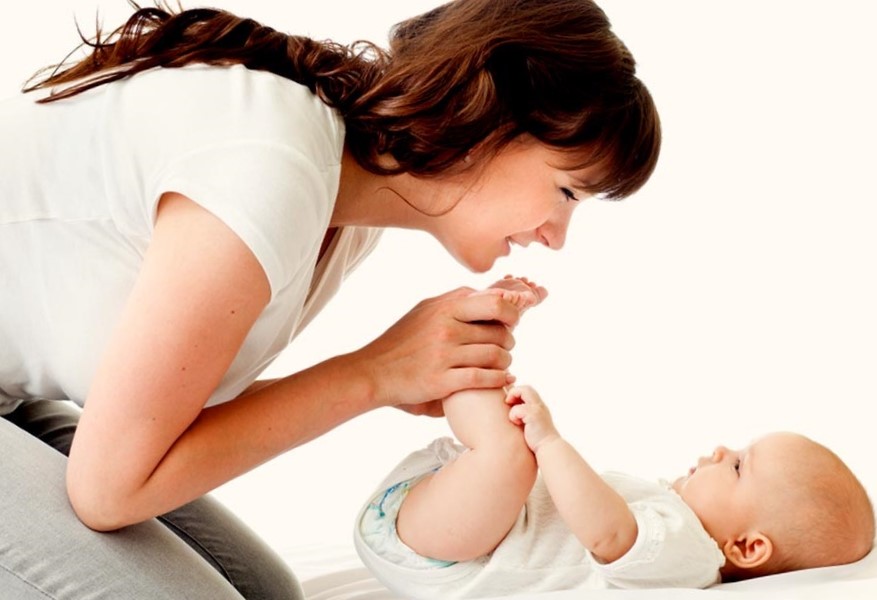
06 Jan Do you really need a baby gate?
Guard rails and baby gates are a common sight in most homes with young children. But do you really need them? Here we’ll explore the pros and cons of using these safety devices, so you can make an informed decision about whether or not they’re right for your family.
What is a baby gate?
A baby gate or barrier blocks off an area of your home, like a stairway. It may also be known as a restraint, child safety gate, stairway gate, or even pet gate. The different names indicate that it’s often used to control not only children but other family pets (and larger animals like livestock).
You can buy a baby gate at most big box stores or online. They come in a variety of shapes and sizes to fit different openings and can be made from materials like metal, plastic, or wood. Besides the baby gate, you can use a swing bouncer or rocker for your baby.
Types of Baby gate
There are two main types of baby gates: Pressure-mounted and hardware-mounted.
- Pressure-mounted: This kind mounts to the door frame and uses pressure (a rubberized bar in most models) to keep it in place. These can be easily removed when you need access through the door but reattached quickly too. They don’t require any tools or drilling, making them a popular choice.
- Hardware-mounted: This type is permanently attached to the wall or door frame with screws and cannot be removed without tools. It’s more secure than pressure-mounted gates but takes a little more time to install.
Do you really need a baby gate?
That depends on your family’s individual needs and circumstances. If you have a young child who is still learning to walk, a baby gate can be an important safety tool. It can also be helpful if you have pets that you don’t want roaming free throughout the house.
On the other hand, if your child is old enough to understand not to go up the stairs, a baby gate isn’t necessary. And if you have hardwood stairs that can hurt your child if they fall, a simple handrail may be a better solution. There are several reasons why parents might choose to use a baby gate:
- To keep children away from dangerous areas of the home, like stairs or a kitchen with hot appliances.
- To create a safe play area for children inside or outside the home.
- To keep pets (and their waste) out of certain areas of the house.
- To help young children learn to walk and climb stairs safely.
- To prevent children from playing.
Using a baby gate to keep young children away is probably the most common reason for using them. You’ll find them in homes that have toddlers who are just learning how to walk or babies who are crawling around on the floor. And if they’re not used correctly, they can pose a danger.
There’s some debate about whether or not baby gates are appropriate for young children. Some experts say they can actually slow down a child’s development. This is because baby gates often prevent babies and toddlers from exploring areas of the home on their own, which forces them to remain in one safe area where they can’t play with toys or interact with family members.
The Pros of Baby Gates
There are many pros to using a baby gate in your home:
- They’re a low-cost way to keep your child safe.
- They’re easy to use and install – most models don’t require any tools or drilling.
- They come in a variety of shapes and sizes to fit different openings, both big and small.
- They can be used to create a separate play area for children, indoors or out.
- Some baby gates are very portable, allowing you to bring them along on vacation or staycations.
- They can help teach young children about boundaries and limitations by keeping them away from danger.
- They can stop pets from entering certain areas of the house, like a bedroom.
- They can prevent children from accessing other parts of the home (like your living room), where they could get hurt or cause damage.
- Some models allow you to easily open and close them with one hand.
- They’re usually inexpensive and very affordable and can be found online and in stores.
The Cons of Baby Gates
On the other hand, there are some cons to using a baby gate:
- They can pose a danger if they’re not used correctly. Some models have gaps and spaces that could trap your fingers or cause your child to get stuck. As long as you read the manufacturer’s instructions and use the gate properly, this shouldn’t be a problem.
- They can be a pain to set up – especially if you have to mount them to a door or wall.
- If your child is old enough to understand not to go up the stairs, they may become frustrated with being confined to one area because of the baby gate.
- When using a gate to create a play area, you’ll have to move it out of the way every time you want to allow your child access to another part of the home.
- If they’re not properly installed, they can pose a safety hazard, such as if they fall on your child and hurt them.
- If you’re using a plastic model, it may be easy for your child to climb over or push aside, which can lead to injury. This is why some parents prefer metal gates that are more difficult for children to move, but they’re also harder to open and close – especially if your hands are full.
- They can take up a lot of space, especially if you have a large home with lots of openings that need to be gated off.
- They can be visually intrusive and unsightly in your home.
Conclusion
Do you really need a baby gate? The answer is that it depends on your baby. If you have a crawling or walking infant, then yes, you may need one of these barriers to keep them from wandering off into the unknown areas of your home where they could get hurt. But if your child can’t even stand up yet, the chances are good that they won’t be able to climb over any sort of barrier anyway! So there’s no reason for alarm until they start moving around more and exploring their environment. And when that happens, make sure you’re prepared by laying out some safety precautions before letting them loose in an unsafe space with potential hazards all around – like stairs without railings!
Keep Reading: Is a bassinet really necessary for a baby?

Sorry, the comment form is closed at this time.